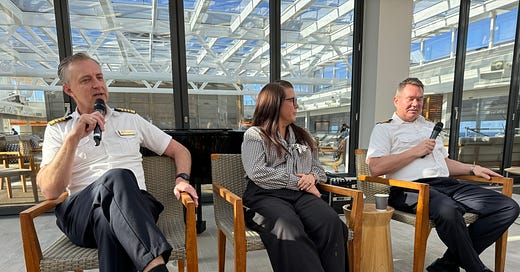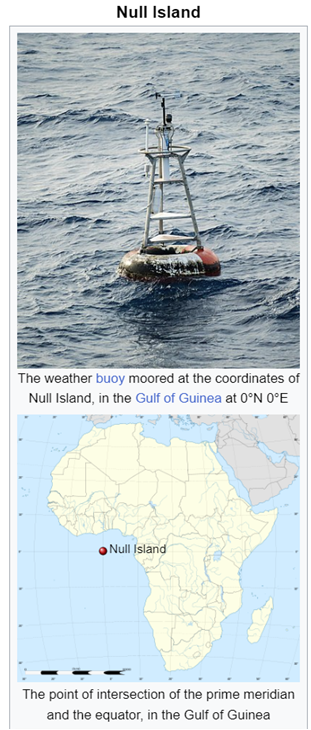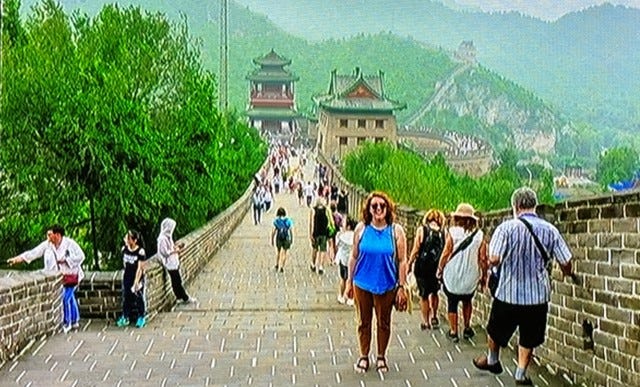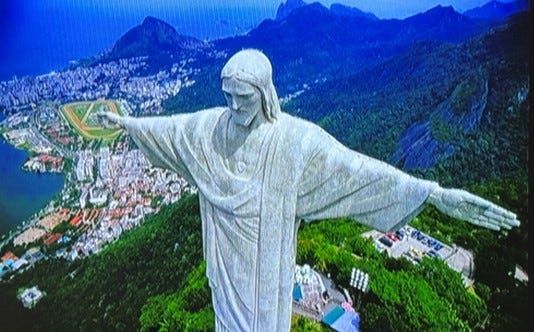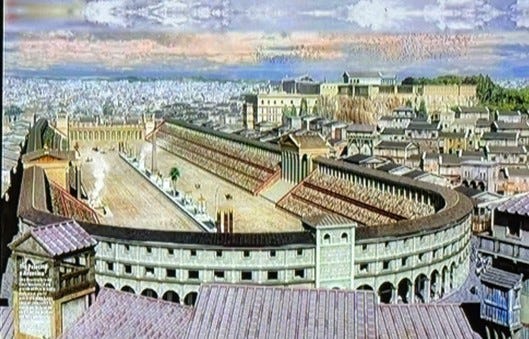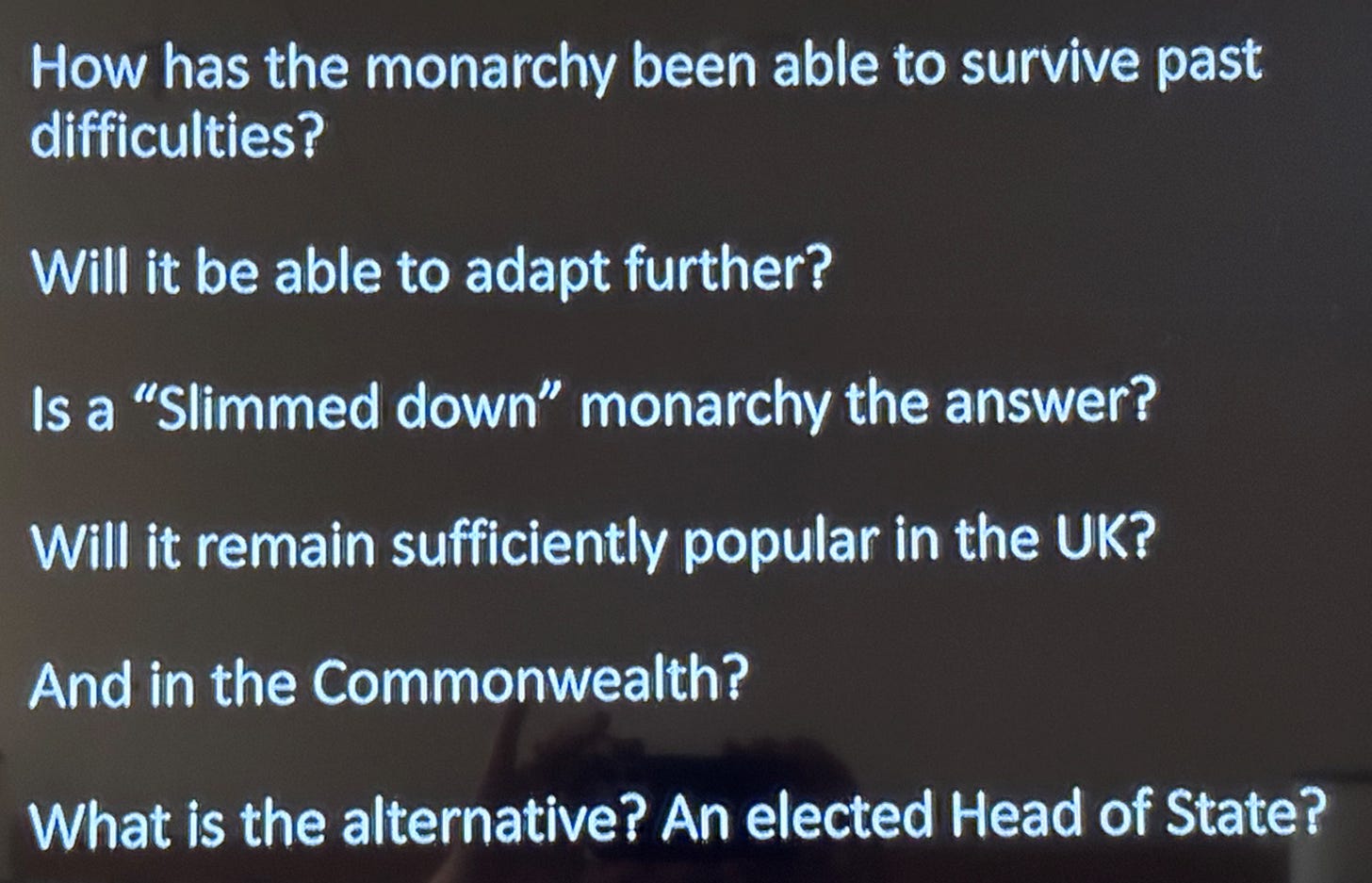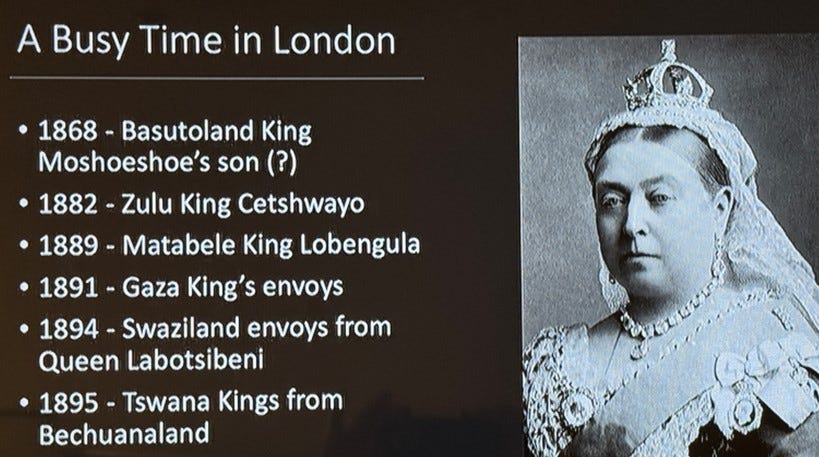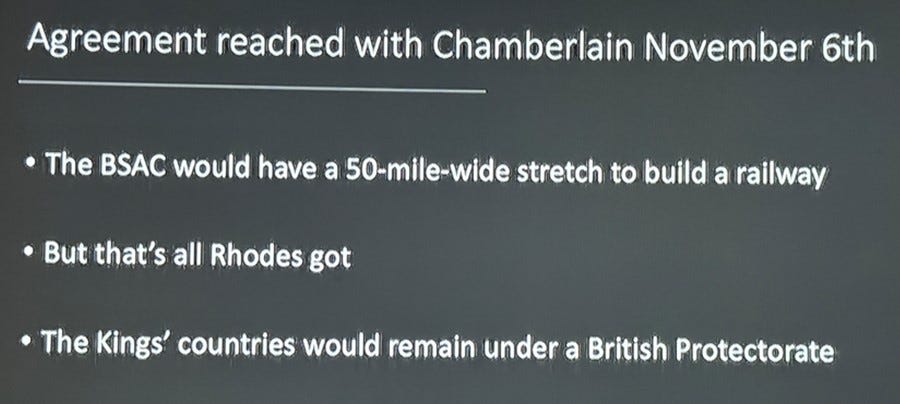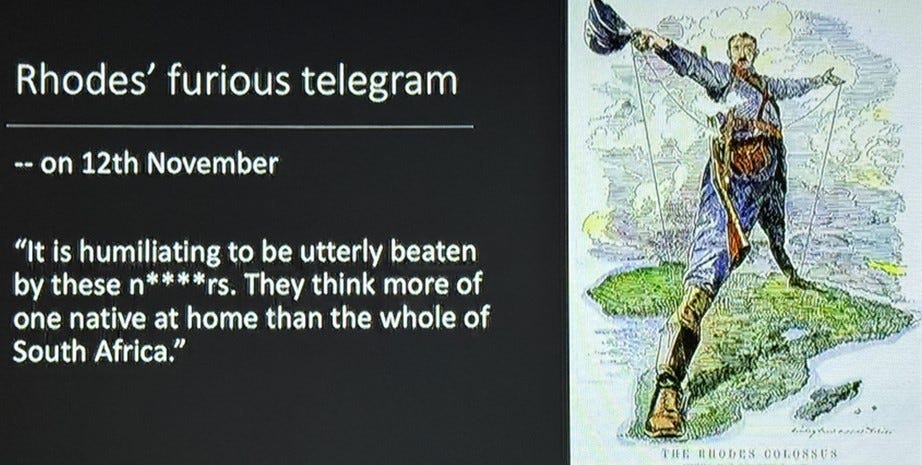Change of Course: We'll Circle 'Null Island' en Route to Dakar
It was announced by the Captain at noon Sunday that we changed course with home office approval. Also: three lectures and a "forum" today.
Capt. Markus Jurland (left in the picture below) and Chief Engineer Jack Christensen were Verity’s guests at this morning’s “coffee chat.” The captain told us that the ship will circle the sea buoy which marks the junction of the equator and zero longitude, which originates in Greenwich, England. This location, marked by a sea buoy in 5,000-meter-deep water, is called Null Island.
Here’s Wikipedia’s picture and map of Null Island:
And here’s the location of the Viking Sky on cruisemapper.com as of noon today. It’s clear that we changed course yesterday, not today, and that the Viking Neptune, 3 days behind us, changed its heading upon leaving Namibia:
Hopefully we will circle the buoy counterclockwise, so Rita and I can see it from our veranda instead of having to go elsewhere on the ship. The projected time is 6 p.m. Monday, which is about an hour before sunset.
At the coffee chat, the chief engineer answered some questions other guests and I had. We learned, for example, that the ship took on 550 tons of fuel in Namibia for the cruise to Dakar; the ship consumes 100 tons of fuel per day when going full speed; it consumes 20 tons per day sitting in port, unless connected to portside electricity (e.g., Los Angeles); the consumption of fuel per passenger averages 60 liters (15.85 gallons) per day; the ship creates 50 cubic meters of fresh water from sea water per day, using reverse osmosis; the most economical speed in terms of fuel consumption is 10 knots; at the end of the cruise, the captain will reveal how many nautical miles we have traveled since leaving Los Angeles. BTW, today is day 106 of our 122-day cruise.
The first lecture of the day was by Viv Lawes on “Untouchable Art: NFTs and Speculation in the Art Market.” I’ve never understood the attraction of buying “Non-Fungible Tokens,” and I still don’t. And a lot of it went over our heads. Here are some slides:
See what I mean?
The next lecture, by David Burgess, was a follow-up to his earlier lecture about the seven wonders of the ancient world. This time the subject was “The Seven New Wonders of the Modern World.” But these were simply less ancient wonders, not modern-day wonders. Here are some slides:
The third lecture was really a “forum” in which the speaker gives background and then conducts a conversation with the audience. After 32 minutes of excellent background slides by Mike Seigel on the question, “Will the British Monarchy Survive Until the Next Century,” Mike left this slide on the screen for the discussion.
The last lecture of the day was by Dr. Kathy Mansfield, speaking about Britain’s dealings with the various kings of southern Africa, seeking protection from Boers and other colonists invading their territory and taking their lands.
For the most part, the kings won from the Queen and Parliament the improvements they sought, but those protections upset Cecil John Rhodes, who wanted all of Africa as part of the British Empire and his British South Africa Company (BSAC) but only got a 50-mile-wide corridor for his Cape Town-to-Cairo railway project:
Dr. Mansfield ended her presentation with a newsreel about the British royal family’s visit to the area after World War I ended to thank them for sending soldiers to help win the war. Here’s the last 3 minutes of the video. It must have been somewhat terrifying for the royals!
That’s all for today. Bye!


